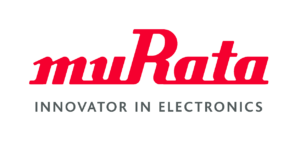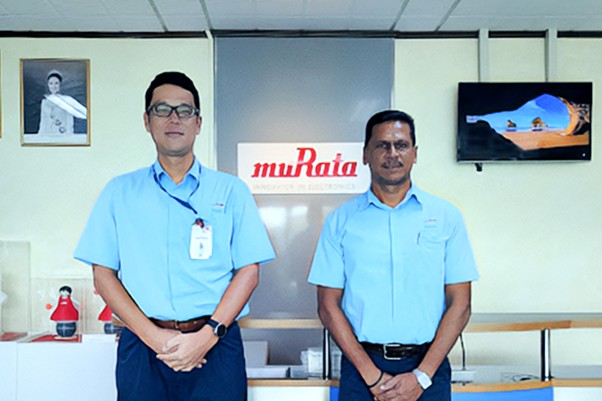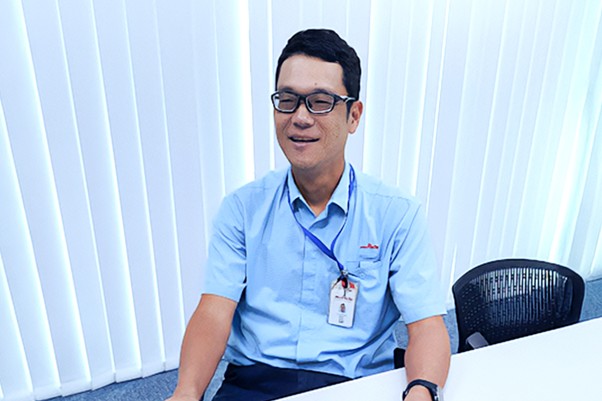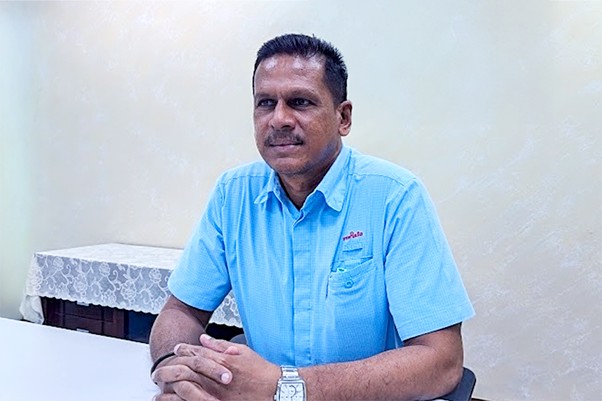1-on-1s Driving Change in Multicultural Organizations – Murata Manufacturing Malaysia’s Challenge


Murata Electronics(Malaysia)Sdn. Bhd.
Mr. Makoto Shibata
Murata Electronics(Malaysia)Sdn. Bhd.
Mr. Rameshkumar Rasappan
Interview with Mr. Shibata
Q:First, could you share the background behind your commitment to 1-on-1s?
Building a Culture that Encourages Open Conversations
Our company operates a manufacturing business in Malaysia as an overseas branch of the Murata group.
Malaysia is a multi-ethnic country where people from diverse racial and religious backgrounds work together. At the same time, there is a strong cultural tendency to “avoid conflict,” making it difficult for managers and employees to speak openly with each other.
For instance, even when employees have interesting ideas, they often hesitate to share them out of deference to their managers. Likewise, managers may want to give more direct feedback but hold back for fear of conflict.
Believing that this situation could hinder organizational growth, we decided to focus on 1-on-1s as a way to create regular opportunities for open and honest discussions.
Q:What were your expectations for 1-on-1s?
Aiming for Managerial Autonomy and Employee Growth
We had two main expectations for 1-on-1s.
The first was to strengthen the autonomy of the management team. Our current president emphasizes a “self-reliant” approach—rather than waiting for instructions from headquarters, managers should think and act independently. To achieve this, it is essential for middle managers to enhance their leadership and communication skills. 1-on-1s serve as a key approach to support this goal.
The second was to expand growth opportunities for employees. By creating an environment where employees can comfortably discuss their career aspirations and work-related challenges, we can help them clarify their individual goals. In particular, employees in manufacturing roles often get caught up in daily tasks, so we wanted to change this situation through 1-on-1s.
Q:Can you share the specific process for introducing 1-on-1s?
A Pilot Program Starting with Five Managers
We planned a one-year pilot program involving 10 managers—five in the first half of the year and another five in the second half. These managers conducted regular 1-on-1s with their team members, and we also introduced Kakeai to help them review and reflect on these sessions.
One month after the introduction, Kakeai provided data on employee reactions, which had previously been difficult to capture. This revealed significant room for improvement in how managers conducted their 1-on-1s. To address this, we established regular review sessions involving the managers, their supervisors, and the management department. Together, we discussed concrete actions for improvement, focusing on fundamental communication skills such as “creating a comfortable environment for open conversations” and “actively listening to employees.” As a result of these efforts, employee satisfaction with 1-on-1s increased significantly within three months.
This initiative transformed our approach from simply “holding meetings” to creating a structured system that supports managers’ growth across the organization.

Q:How does Kakeai specifically help?
How Visualization Enhances Dialogue
Kakeai has been effective in two key ways.
First, it provides a solid foundation for ensuring 1-on-1s are consistently held and integrated into our routine. Despite the busy nature of daily tasks, Kakeai encourages regular dialogue and supports its ongoing implementation. This is especially important in manufacturing settings, where daily operations often take precedence, but with Kakeai, we have been able to prioritize time for employee development.
Second, it helps improve the quality of management. Previously, there were challenges with inconsistent skills among managers during evaluation or career development 1-on-1s.
With the implementation of Kakeai, feedback from team members is now visible, enabling us to standardize and improve management practices. This has allowed us to clearly communicate our commitment to employee development and set specific expectations for our local staff.
Q:How would you like to change the organization in the future?
Creating a Culture Where Self-Reliant Talent Thrives
Our goal is to build an organization where it is natural for local staff to take initiative and act on their own accord. Through regular 1-on-1s, we aim to foster a culture where each employee develops their own ideas, ultimately leading to a situation where “employees are the ones leading their managers.” This level of autonomy is what we want to cultivate.
Interview with Mr. Rameshkumar Rasappan
Q:What were your thoughts when you were selected to be a member of the 1-on-1 pilot program?
A Challenge Full of Both Expectation and Uncertainty
I felt truly honored to be selected as part of this new initiative, but to be honest, I had some initial uncertainty as well.
Malaysia is a country where various races and religions coexist in harmony, but at the same time, there is a deeply ingrained value of “avoiding conflict.” As a result, it is not easy for managers and employees here to have open and honest conversations.
Having grown up in this culture, I was unsure of how to approach 1-on-1s with my team members.

Q:What has changed since you actually conducted the 1-on-1?
Setting Themes and Reflecting on them Enhance the Quality of Dialogue
The most significant change has been the quality of dialogue with my team. Previously, we held 1-on-1s under the “Mentor-Mentee Program,” but the lack of specific themes to discuss was a major challenge.
With Kakeai, however, my team members can choose the themes they want to talk about, allowing me to prepare accordingly. As a result, the conversations have become more friendly and engaging, and I have been able to provide the information my team truly needs.
Furthermore, Kakeai includes a system that enhances the quality of these conversations. After each 1-on-1, my team provides feedback, and over time, the feedback accumulates, giving me a clearer picture of my 1-on-1 characteristics through a score. When we first started, the scores were tough, but the data helped me identify areas for improvement and showed me how I could make it easier for my team to open up.
One of the most important lessons I learned was to focus not only on work-related themes but also on personal matters. In Malaysia’s culture, there is often resistance to sharing personal issues with managers, but I have worked to create an environment where my team feels comfortable talking to me, using my experience and age to build trust.
Q:Are there any key aspects you focus on during 1-on-1s with a diverse team?
Showing the “Why” and the “Outcome” to Move Forward Together with the New Generation
In my department, we have engineers with a range of expertise, including mechanical, electrical, electronics, and mechatronics. Our team is also culturally diverse, with members from Malay, Chinese, Indian, and Japanese backgrounds.
Additionally, there is a generational gap between my own X generation and the Y and millennial generations. In the past, employees simply followed instructions from their managers, but the younger generations now need to understand “why something needs to be done” and “what can be achieved by doing it.”
Through the use of Kakeai, I have been able to build better relationships with the new generation of employees and gain a deeper understanding of their perspectives. As a result, I feel that my management skills have improved as well.
Q:What are your future plans?
Supporting Team Growth through Deeper Dialogue in 1-on-1s
Over the past six months, I feel that my relationship with my team members has steadily improved. I have become more proactive in listening, ensuring I address their challenges and concerns, and providing appropriate feedback and guidance. As a result, my team now has a more comfortable environment to speak openly, and we have seen an improvement in the satisfaction scores for our 1-on-1s.
Moving forward, I plan to continue valuing dialogue with our diverse team, considering both generational and cultural differences, while supporting each individual’s growth.
※The contents of the above cases are current as of January 2025. It may have changed at the time of viewing.
